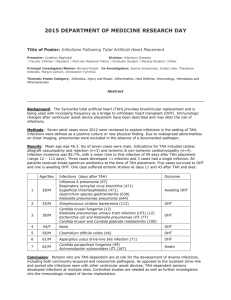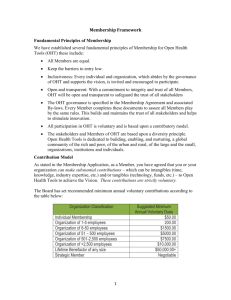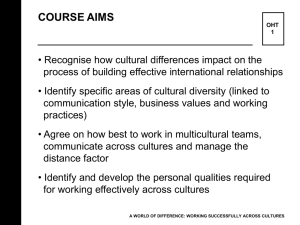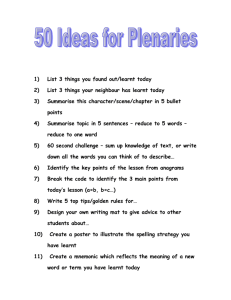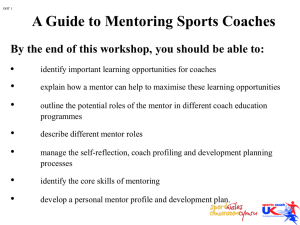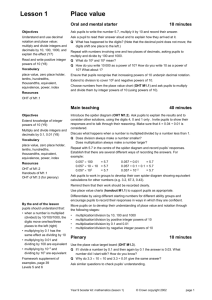Y8 Horror SOW from The Priory - Hertfordshire Grid for Learning
advertisement
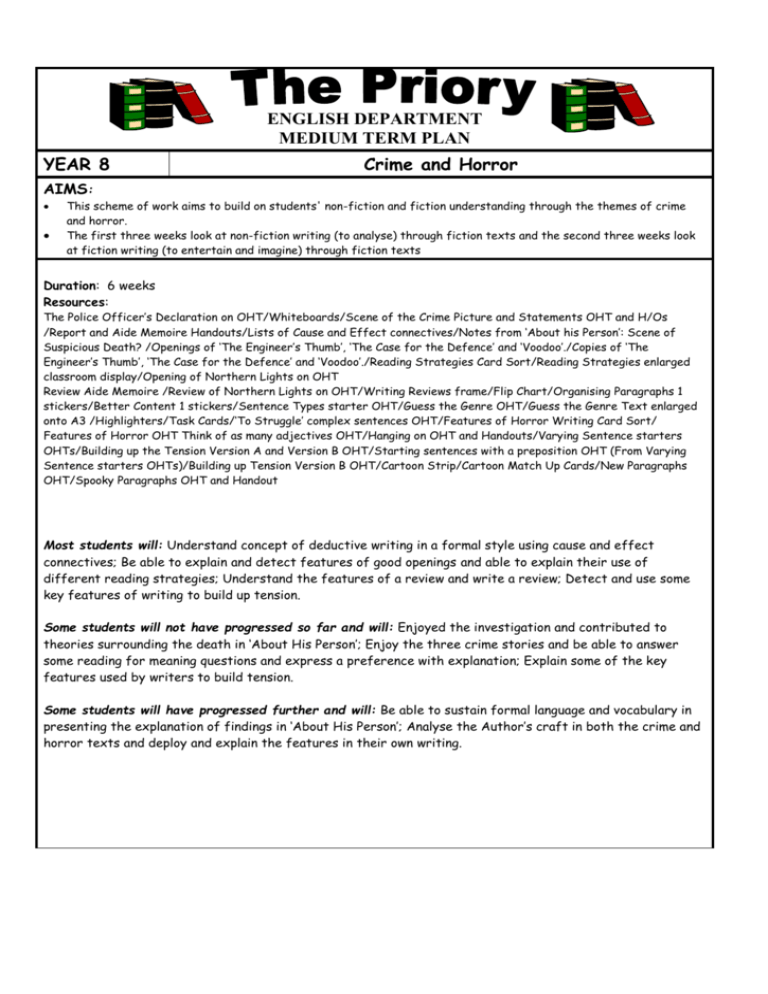
ENGLISH DEPARTMENT MEDIUM TERM PLAN YEAR 8 Crime and Horror AIMS: This scheme of work aims to build on students' non-fiction and fiction understanding through the themes of crime and horror. The first three weeks look at non-fiction writing (to analyse) through fiction texts and the second three weeks look at fiction writing (to entertain and imagine) through fiction texts Duration: 6 weeks Resources: The Police Officer’s Declaration on OHT/Whiteboards/Scene of the Crime Picture and Statements OHT and H/Os /Report and Aide Memoire Handouts/Lists of Cause and Effect connectives/Notes from ‘About his Person’: Scene of Suspicious Death? /Openings of ‘The Engineer’s Thumb’, ‘The Case for the Defence’ and ‘Voodoo’./Copies of ‘The Engineer’s Thumb’, ‘The Case for the Defence’ and ‘Voodoo’./Reading Strategies Card Sort/Reading Strategies enlarged classroom display/Opening of Northern Lights on OHT Review Aide Memoire /Review of Northern Lights on OHT/Writing Reviews frame/Flip Chart/Organising Paragraphs 1 stickers/Better Content 1 stickers/Sentence Types starter OHT/Guess the Genre OHT/Guess the Genre Text enlarged onto A3 /Highlighters/Task Cards/‘To Struggle’ complex sentences OHT/Features of Horror Writing Card Sort/ Features of Horror OHT Think of as many adjectives OHT/Hanging on OHT and Handouts/Varying Sentence starters OHTs/Building up the Tension Version A and Version B OHT/Starting sentences with a preposition OHT (From Varying Sentence starters OHTs)/Building up Tension Version B OHT/Cartoon Strip/Cartoon Match Up Cards/New Paragraphs OHT/Spooky Paragraphs OHT and Handout Most students will: Understand concept of deductive writing in a formal style using cause and effect connectives; Be able to explain and detect features of good openings and able to explain their use of different reading strategies; Understand the features of a review and write a review; Detect and use some key features of writing to build up tension. Some students will not have progressed so far and will: Enjoyed the investigation and contributed to theories surrounding the death in ‘About His Person’; Enjoy the three crime stories and be able to answer some reading for meaning questions and express a preference with explanation; Explain some of the key features used by writers to build tension. Some students will have progressed further and will: Be able to sustain formal language and vocabulary in presenting the explanation of findings in ‘About His Person’; Analyse the Author’s craft in both the crime and horror texts and deploy and explain the features in their own writing. KEY TEACHING AND LEARNING OBJECTIVES Pupils should be taught to: TEXT LEVEL – READING Read for Meaning R4 review their developing skills as active critical readers who search for meaning using a range of reading strategies Understand the author's craft R10 analyse the overall structure of a text to identify how key ideas are developed, i.e. through the organisation of content and the patterns of language used Study of literary texts R13 read a substantial text revising and refining interpretations of subject matter, style and technique TEXT LEVEL - WRITING Write to imagine, explore, entertain Wr5 develop the use of commentary and description in narrative, e.g. by addressing the reader directly Write to inform, explain, describe Wr12 describe and event, process or situation, using language with an appropriate degree of formality. Write to analyse, review,comment Wr18 Write a critical account of a substantial text, taking account of the context in which it was written and the likely impact on its intended readers. SENTENCE LEVEL Sentence construction and Punctuation S2 explore the impact of a variety of sentence structures, e.g. when it is effective to use short direct sentences S6 explore and compare different methods of grouping sentences into paragraphs of continuous text that are clearly focused and well developed e.g. by chronology, comparison etc WORD LEVEL Spelling Wd4 learn complex and polysyllabic words and unfamiliar words which do not conform to regular patterns Vocabulary Wd8 understand and use the key terms that help to describe and analyse language, e.g. word class. Noun phrase, subordinate clause, syntax, conditional; TEXT LEVEL – SPEAKING AND LISTENING Group discussion and interaction: SpL10 Use talk to question, hypothesise, speculate, evaluate, solve problems and develop thinking about complex issues and ideas. SpL 5 ask questions to clarify understanding and refine ideas POSSIBLE TEACHING SEQUENCE Week 1: Deductive thinking! Objectives: Vocabulary Wd10 extend the range of prepositions and connectives used to indicate purpose i.e. cause and effect connectives Standard English and Language Variation S12 Explore and use different degrees of formality in written and oral texts, e.g. formal speeches, informal journals Reading for Meaning Recognise bias and objectivity. Distinguishing facts from hypothesis, theories and opinions Write to inform/explain/describe Organise and present information, selecting and synthesising appropriate material and guiding the reader clearly through the text Speaking SpL3 Make a formal presentation in Standard English, using appropriate rhetorical devices COVERAGE (Resources) – The Police Officer’s Declaration on OHT Whiteboards Scene of the Crime Picture and Statements OHT and H/Os Report and Aide Memoire Handouts Lists of Cause and Effect connectives Notes from ‘About his Person’: Scene of Suspicious Death? FOCUS -‘Give us a Clue’ Statues. Explain to the class that the aim of the game is to guess the occupation given in a freeze frame. Show half the class a white board with AIR CABIN CREW written on it (the other half of the class must not be able to see your whiteboard). Explain to the students that they are going to freeze-frame a clue to represent that occupation (no movement allowed!) The other half of the class has to guess from the rest of the class’ freezeframes, what the occupation is. The guessers become the GUAC Statues - DOCTOR/NURSE/DJ/SINGER etc. Show students OHT of Police officer’s declaration with the title covered up and without telling anyone what occupation this speech belongs to, ask them to make one single freeze frame of this speech. Ask groups to comment on each other’s freeze-frame and ask a confident individual to ‘come alive’ and read the declaration in character. Then ask students to discuss ‘Who might be saying this?’ ‘Where?’ and ‘Who to?’ and ask them for their comments about the type of language. Discuss the declaration in Shared Reading. Underline the very formal sentences. Modelling the first answer first, change the formal text into concise plain English annotating on the board OHT: ‘I promise to serve the Queen’; ‘Without bias’; ‘I will try to keep the peace’; ’Keep everyone safe from harm’ Explain to the students that for the purposes of the lesson they have taken the declaration and will be required to undertake some of the tasks of a Police Officer. Set the scene of a ‘Suspicious Death’ by using OHT picture stimulus of the ‘Scene of the Crime’. Discuss the clues and the concept of ‘deduction’. Give students the Scene of the Crime Picture and Statements to discuss in pairs and make their decisions. Students discuss answers in pairs then snowball into another pair to discuss. Give students the report task. Discuss with students the importance of exact and formal language in a murder inquiry. Students must write their report using sequencing connectives and cause and effect connectives based on their ‘Definitely True’ ‘Definitely False’ statements. Modelled and Shared Writing: i.e. ‘If Mr. Peter’s was mending his car when he was attacked he would have closed the house door behind him whilst working on the car. Therefore, Mr Peter’s was probably asleep and may have been disturbed by the sound of…’ Students write their report adding detail and use of connectives from the display to explain. Introduce Notes from ‘About his Person’: Scene of Suspicious Death. Investigation Log. This Police Officer’s notes could tell us he has a somewhat poetic hobby! Ask students to look at content and features of poetry before going on to work in groups to fill in the second column (Teacher models first one on OHT) – instructions for the investigating team. Use A3 sheet as ‘ Crime Boards’ up on the wall. Students then play ‘consequences’ with their notes (Teacher models first one on OHT ‘Dead man ran a multimillion pound Pharmaceutical Company’. Groups move around the room filling in the third column of other groups’ Crime Boards with imaginary findings from the instructions. Using the completed notes, students must decide what their verdict will be. Murder? Natural Causes? Manslaughter? Accidental death? Murder by Misadventure? Investigation teams work together as a team to discuss significant clues and explain findings in a formal presentation for the Head of CID and the team. OUTCOMES to be selected from – Written report explaining Mr Peter’s Death Speaking and Listening Assessment on Suspicious Death Theories. Week 2: A perfect murder? Objectives: Stylistic Conventions of non-fiction S9 adapt the stylistic conventions of the main non-fiction text types to fit different audiences and purposes e.g. police statements Reading for Meaning R4 review their developing skills as active, critical readers who search for meaning using a range of reading strategies R13 read a substantial text revising and refining interpretations of subject matter, style and technique Speaking and Listening Use talk to question, hypothesise, speculate, evaluate, solve problems and develop thinking about complex issues and ideas COVERAGE (Resources) – Whiteboards Narrative Hooks Card sort Openings of ‘The Engineer’s Thumb’, ‘The Case for the Defence’ and ‘Voodoo’. Copies of ‘The Engineer’s Thumb’, ‘The Case for the Defence’ and ‘Voodoo’. Reading Strategies Card Sort Reading Strategies enlarged classroom display FOCUS Students to brainstorm the features of what they feel makes a good opening of a story. Students complete Narrative Hooks Card sort Students are given the openings of the three stories. Discuss which has the best opening and why – make comment on modern/older settings given in the texts. Make predictions about what may happen in each story. List the features of each of the openings on OHT. Students complete Reading Strategies card sort. Shared reading of ‘A Case for the Defence’. Teacher modelling explicit use of reading strategies. Discuss whether the murderer got away with it in groups – feedback. Students work in pairs to answer one of the questions 1-5. Students should explain which reading strategy they used to answer each question when they feed back to rest of the class. Group reading of ‘Voodoo’ by Frederic Brown. Students to explain which reading strategy they used to understand the ending. Students write Mr. Decker’s statement to the police: they can write an honest declaration which may not be believed or they can write a dishonest, but more believable declaration (which must include explanations for the hat pin and wax being present at the scene of death). Ask students to discuss how they feel, as readers, about the endings of the two stories so far. Both of these stories have endings which provoke the reader’s thoughts. In ‘A Case for the Defence’ the writer allows the reader access to the evidence in order to draw their own conclusions by ending with a question whereas in ‘Voodoo’ the writer has allowed the reader to know the truth, through inferred reading, however unbelievable it may seem. Shared reading of extract from ‘The Engineer’s Thumb’ by Arthur Conan Doyle posing the question: ‘Does the murderous attacker get away with his crime?’ Students discuss the answers to the comprehension questions, again citing which reading strategies they have used whilst searching for the information. Finally, students answer the pre-reading question set at the beginning of the lesson. Elicit students’ opinions as to why we don’t have an answer to the question yet this extract is longer than the previous two complete stories. Answer: Building up the tension and anticipation through setting and character and finally by use of a cliff-hanger. Students work in groups to discuss and suggest what possible reason could be behind the engineer’s missing thumb. In groups, students look back at the openings to all three stories and decide on best opening versus best story and prepare to feedback by envoying around the class and come to a whole class consensus’. OUTCOMES to be selected from – ‘Voodoo’ - Mr Decker’s statement to the police ‘The Engineer’s Thumb’ – SpL discussion of what may have happened. Week 3: Reviewing Reading Objectives: Understand the author's craft R11 investigate the different ways familiar themes are explored and presented by different writers Write to analyse , review, comment Wr18 write a critical review of a substantial text. Taking account of the context in which it was written and the likely impact on its intended readers COVERAGE (Resources) –FOCUS – Opening of Northern Lights on OHT Review Aide Memoire Review of Northern Lights on OHT Writing Reviews frame Flip Chart Organising Paragraphs 1 stickers Better Content 1 stickers Students brainstorm the reasons why reviews are written and read. Look at the opening of Northern Lights and remember last week’s work on what makes a good opening. Shared reading of student review and teacher annotates key features of reviews (using review aide memoire) and notes down conventions of review writing on flip chart Students begin to draft their own reviews for the story they liked most and the story they liked least from last week Use writing partners armed with checklists of paragraph features to correct each other’s work Finish Assessment piece – Review by using Organising Paragraphs 1 stickers and Better Content 1 stickers OUTCOMES to be selected from – Review Writing Week 4: Horrible Horror Objectives: Sentence construction and punctuation S1 combine clauses into complex sentences. Using the comma effectively as a boundary signpost and checking for fluency and clarity Understanding the Author’s Craft R10 analyse the overall structure of a text to identify how key ideas are developed through patterns of language used. Write to imagine, explore,entertain R5 develop the uses of description in narrative Plan, draft and present R2 re-read work to anticipate the effect on the reader and revise style and structure, as well as accuracy, with this in mind COVERAGE (Resources) – Sentence Types starter OHT Guess the Genre OHT Guess the Genre Text enlarged onto A3 Highlighters Task Cards ‘To Struggle’ complex sentences OHT Features of Horror Writing Card Sort FOCUS Starter: Sentence types OHT – Simple, Compound and Complex. Tell the students to come up with an example of each type of sentence using the verb ‘sit’ – point out that the past tense is necessary. Show the OHT (Keep Task One covered) and group copies of the extract – Guess the Genre. Pre reading question – what is the genre of this story? Feedback genre: Horror Mystery Teacher reads the extract and asks questions about the content: Why do you think the writer chooses an attic? What questions do you want to know about the story? Elicit that the writer has created MYSTERY, SUSPENSE and ATMOSPHERE. (Put these key words on the w b) – How can we, as writers, do the same? To create mystery, suspense and atmosphere, we have to choose our sentence types carefully and our words carefully. Reveal ‘Task’: on the board: This writer doesn’t just say ‘I went in the attic. It was scary’ s He writes sentences and uses words, which give us impressions using senses to build a picture in our minds: sounds, sights and smells. Can you find a word /phrase or sentence that is written to help us get an impression of the feel of the attic? Take answers underlining the appropriate answers on the OHT w/b. Group students into mixed ability groups of 7 with an A4 copy of the Guess the genre text to highlight on. Give easier tasks to appropriate individuals to differentiate. Jigsaw the groups so that all Task 1 students move to work together etc. Students then return to their home groups to feedback their features and highlight their ‘home’ A3 copy. Plenary: Feedback answers from different groups using OHT to focus students. Starter: ‘To Struggle’ complex sentences OHT Students do ‘Features of Horror writing’ card sort matching up the explanation of language to the examples of language. Teacher reveals answers on Features of Horror OHT. Look at the examples of language from the card sort. Question: Where do you think this story could be set? Elicit: A Hallway. Put Guessing the Genre OHT up and remind students of good example of Horror writing. Tell students we are going to write a class setting description based on the ideas in the card sort. The setting is a hallway. Shared writing: Write the first paragraph together using words and phrases from the unfinished card sort language examples. Students then finish off the description – they must include all features and end on a cliff-hanger that begins with ‘But….’ Remind students that NOTHING actually happens – this is just the setting of the scene and is purely description based on setting. OUTCOMES to be selected from – Writing to imagine – a description of ‘The Hallway’. Week 5: Tension Building Objectives: Sentences construction and punctuation S2 explore the impact of a variety of sentence structures. Reading for Meaning R7 identify the development of themes, values or ideas in texts Study of Literary Texts Recognise the conventions of some of the common literary forms i.e. horror and thriller Write to imagine, explore, entertain Wr 6 experiment with figurative language in conveying a sense of character and setting COVERAGE (Resources) – Features of Horror OHT Think of as many adjectives OHT Hanging on OHT and Handouts Varying Sentence starters OHTs Building up the Tension Version A and Version B OHT FOCUS Starter: Think of as many adjectives that describe the noise of the sound that they describe. What are these kinds of words known as? Whole class reading of ‘Hanging On’ – discuss content of the story by answering the points in the discuss box at the bottom of the page. DO NOT READ THE NEXT CHAPTER YET! Individual Reading and answering questions on Handout and these points listed on the whiteboard : a) Find some words which have been used to describe sounds. b) Find some words which have been used more than once. c) Find some one word sentences. d) Find some sentences which have been placed in unexpected places on the page. Discuss answers then ask for more sophisticated examples of how these features could be described. A) Onomatopoeia B) Repetition C) Single Word Sentences D) Layout for effect. Get students to write these in their books to add to their records of the features used in successful horror writing. Read next chapter whole class – it’s only two lines: ‘A leaf, a dumb leaf!’ W/b ‘Plausible Explanation’ explain this concept and ask students why this concept works well for dramatic effect when building up the tension? Class write down example of scary incidents on post it note i.e. Door slams by itself. Swap post it and try to write a plausible explanation. Choice of starter OHTs from Varying Sentences selection Show students Version A of ‘Building up the Tension’ OHT (Keep Version B covered) Discuss effectiveness of the extract – remind students of the 10 features of horror writing - on flip chart from previous lesson Ask students – How can this work be improved? Explain that students are going to re-write this story adding extra information using the featured techniques to improve writing. Explain a maximum of six paragraphs and a minimum of three paragraphs is required. W/b the following paragraph starters for students who find it difficult to start: Walking towards….. When Michael arrived… Michael peered… Suddenly…. Through a crack in the ceiling… Emphasise to students that they don’t have to use the above paragraph starters but the story must contain include the facts from Version A, written in a more descriptive manner – using some all of the 10 Features of Horror writing OHT to succeed Monitor individual writing then choose extracts to read out whole class. Reveal Version B – briefly discuss effect of features used to create mood and atmosphere then use cloze activity as a focus for language choice by asking students to work in pairs/groups to come up with at least three words for the gaps ready to suggest – ask students to choose their ‘best fit’ word or the one they prefer and be ready to give a reason for their choice. OUTCOMES to be selected from – Students’ own version B or a discussion and comparison of best work in class versus Version B Week 6: Escape! Objectives: Spelling strategies Sp6 devise own ways to improve spelling, building on strategies from year 7 Write to imagine, explore, entertain Wr 6 experiment with figurative language in conveying a sense of character and setting Paragraphing and cohesion Explore and compare different methods of grouping sentences into paragraphs of continuous text that are clearly focused and well developed COVERAGE (Resources) – Starting sentences with a preposition OHT (From Varying Sentence starters OHTs) Building up Tension Version B OHT Cartoon Strip Cartoon Match Up Cards New Paragraphs OHT Spooky Paragraphs OHT and Handout FOCUS Starting sentences with a preposition Re-show Version B OHT to students and re-read to recap last lesson. Point out to students the use of punctuation – questions to empathise with the character’s thoughts and feelings – apprehension, fear, trepidation. Also, that the writer is waiting to reveal the murderer to us and we have to wait to find out more – another cliff-hanger, ready to make us turn the next page. Look at the cartoon strip of what happens next in the story – match up the sentence starter descriptions in the cartoon match up cards to each cartoon box. His heart pounded in his chest as if… With desperation, he tried to… Hands fumbling, he searched… Cold fear gripped his heart as… Perhaps there was another way? He thought maybe, just maybe, he could… The sinister shadow of… No way out. He would have to… Fearful of the sound that… Write the next chapter of the story – using as many of the features of writing as possible. Look back at the list of 10 features of Horror Writing (on OHT)– how many of these features have you used? More than five features is the aim! Swap draft books with someone else and compliment them on a feature of horror writing that they have used to great effect. Be ready to tell the class about it. Plenary: Choose students to quote and explain the success of a feature used in someone else’s work. Starter: Elicit reasons for using new paragraphs – OHT. List on w/b. Answers: 1. Change of speaker 2. Change of time 3. Change if place 4. Change of viewpoint or perspective 5. For effect 6. Change of topic 7. To make a new point within a topic Read story together – what’s missing? Paragraphs! Students denote paragraphs with // – they MUST annotate their paragraphs with their reasons for using new paragraphs – using language in a-e of starter activity. Students look at own continuation of the story from last lesson. Check paragraphs and explain their use. Swap with partner to check and discuss to agree on paragraph usage. Suggest students put some direct speech writing in their work to show how paragraphs differentiate between speakers. OUTCOMES to be selected from – Writing to imagine – the continuation of the story based on using features of horror writing to build up the tension
